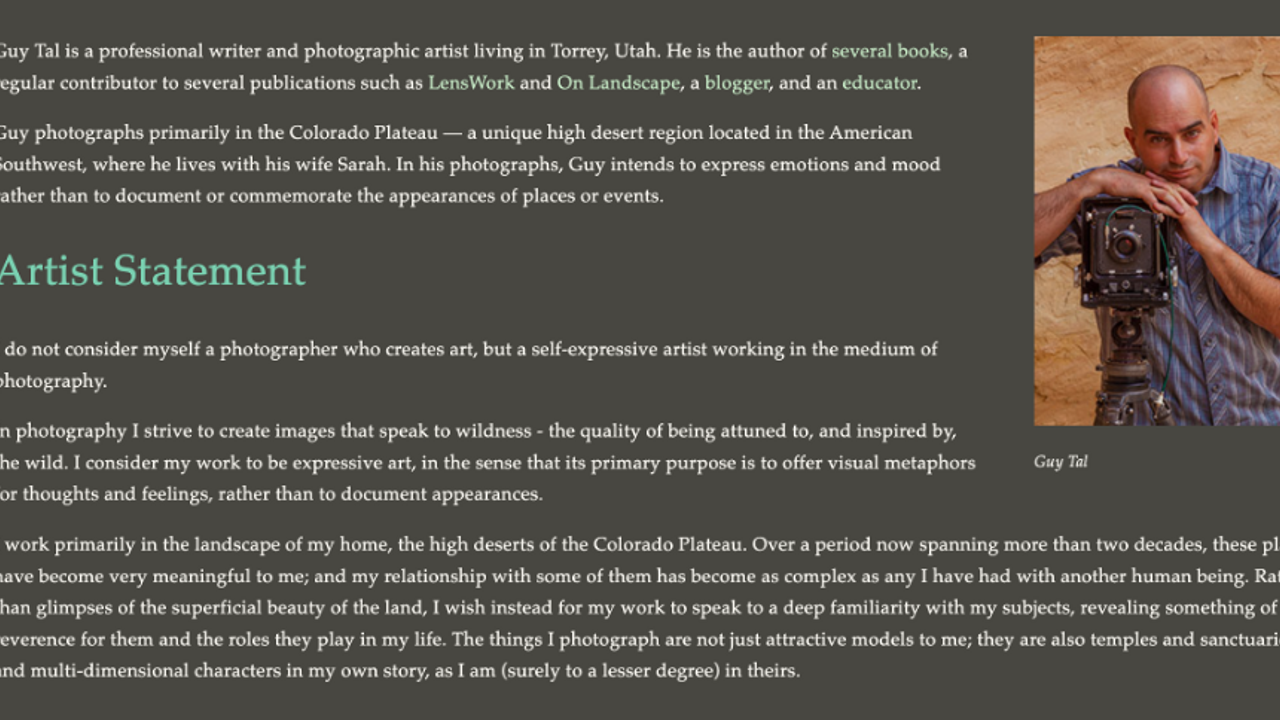
What to expect on a Guy Tal workshop
Apr 21, 2022I fear that future generations will judge us harshly for our failure to place proper value on wildness, diversity, open space, spirit, solitude, and other treasures of the natural world still available to us today. May they at least know that some of us tried.
—Guy Tal
As humans we often want to distill thoughts, concepts, people, or ideals into one-word summaries. Great, good, bad, sick, or awesome are commonly used words that rest at the extreme of the scales. If I was going to summarize Guy Tal (Which is impossible) the singularly word would be PROLIFIC. With two amazingly successful and inspirational books: More Than a Rock , and Another Day Not Wasted, along with a blog overflowing with amazing thoughts on life and photography, and two regular columns in Lenswork and OnLandscape no one today comes even close to matching the published written word that Guy shares with us.
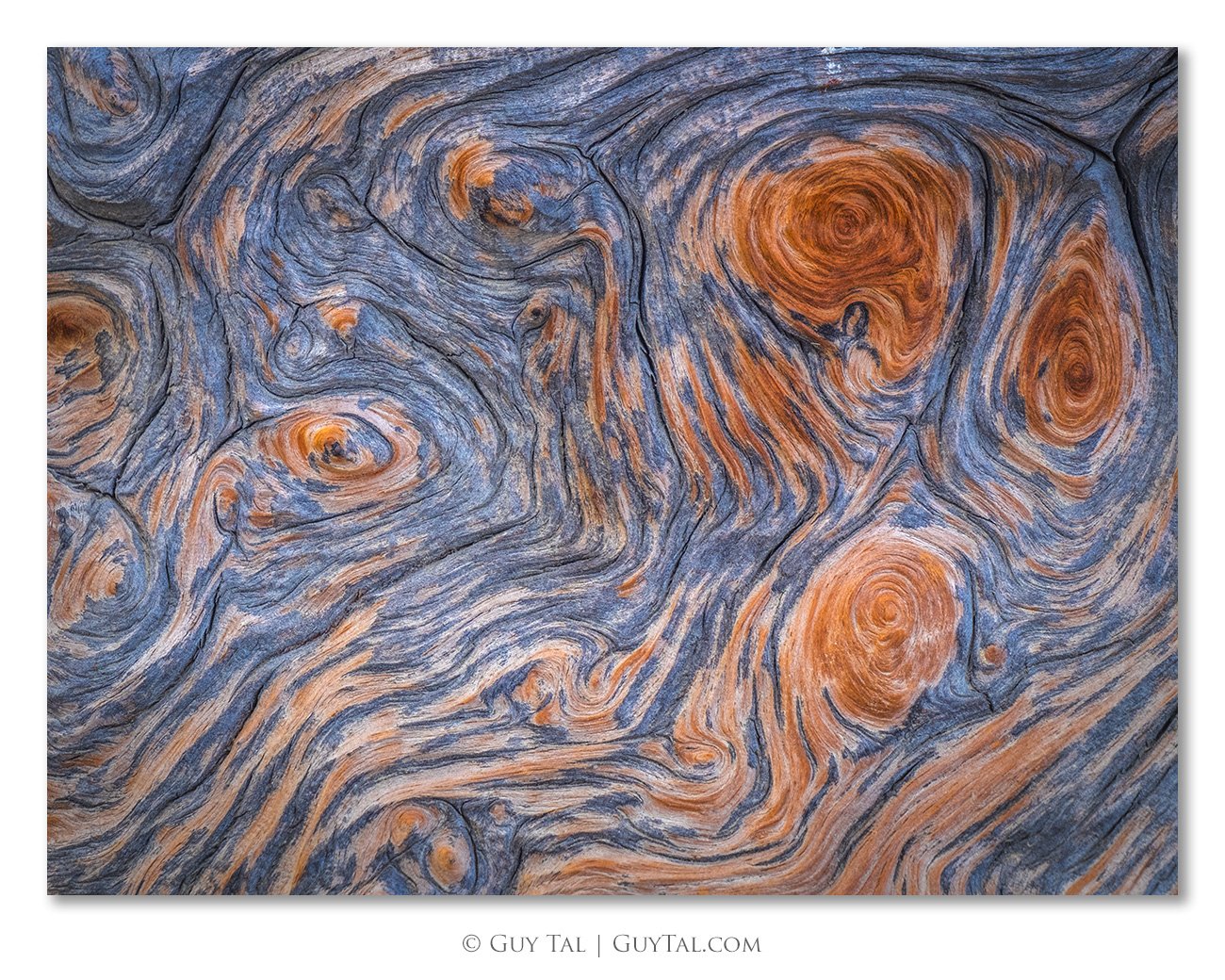
One of my personal favorites from Guy’s images. Vincent’s Tree
I can’t remember when or where I discovered Guy Tal. Funny enough I think it was through his book on post processing that he let go out of print, not for lack of sales but because he doesn’t want that to be the focus of his work or teachings. He only teaches 2-3 workshops a year so when I discovered his work with Michael Gordon through Visionary Workshops, I was not only intrigued but ready to head to Death Valley.
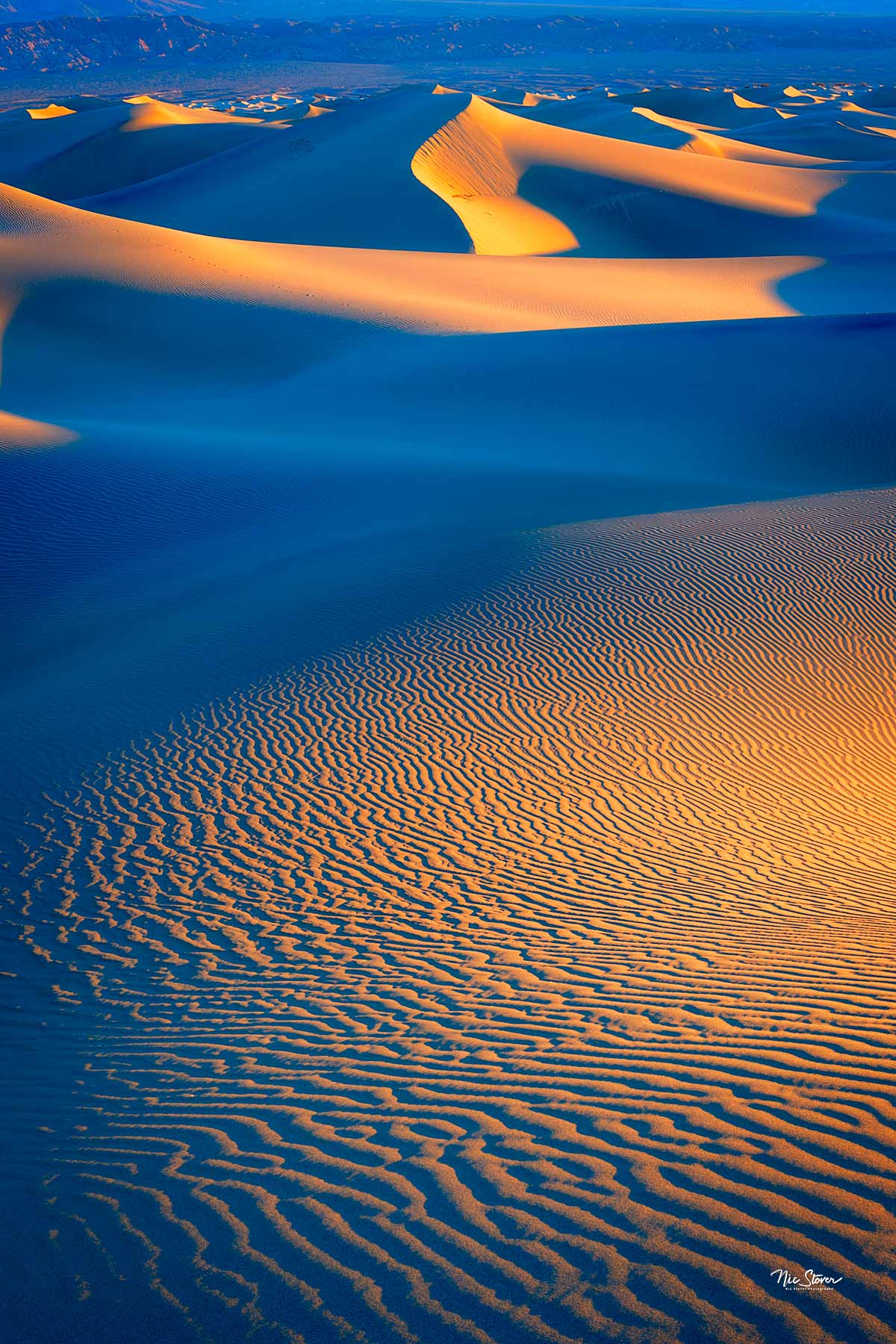
The first image I produced on the workshop. Aesthetically pleasant. Creative? Unique? TBD
Over the course of 4 days, we spent about 12 hours in the classroom and traveled to 7 photography locations throughout Death Valley. There were 11 participants in total from all over the US with skill levels and experience in Deep Astro, traditional Film photography, and landscapes that were truly awe inspiring.
While there are parts of my time I may never digest, others I am still working to understand, there are some things I am able to apply to my work, my teaching, and my personal journey that I want to share with you.
- The first concept is about Equivalence or Equivalents.
- Some learnings about visual inventory
- The third major takeaway was about Divergent thinking skills
Equivalence / Equivalents
This was a term I had heard bounced around over the years and had even read about it in some of Guy’s writing. But I don’t think I fully understood it. This was originally coined by Alfred Stieglitz when he chose to do a project on clouds to demonstrate many different things beyond the realm of traditional photography. Stieglitz called these photographs “Equivalents. More than describing the visible surfaces of things, the works could express pure emotion, paralleling the artist’s own inner state.” https://archive.artic.edu/stieglitz/equivalents/
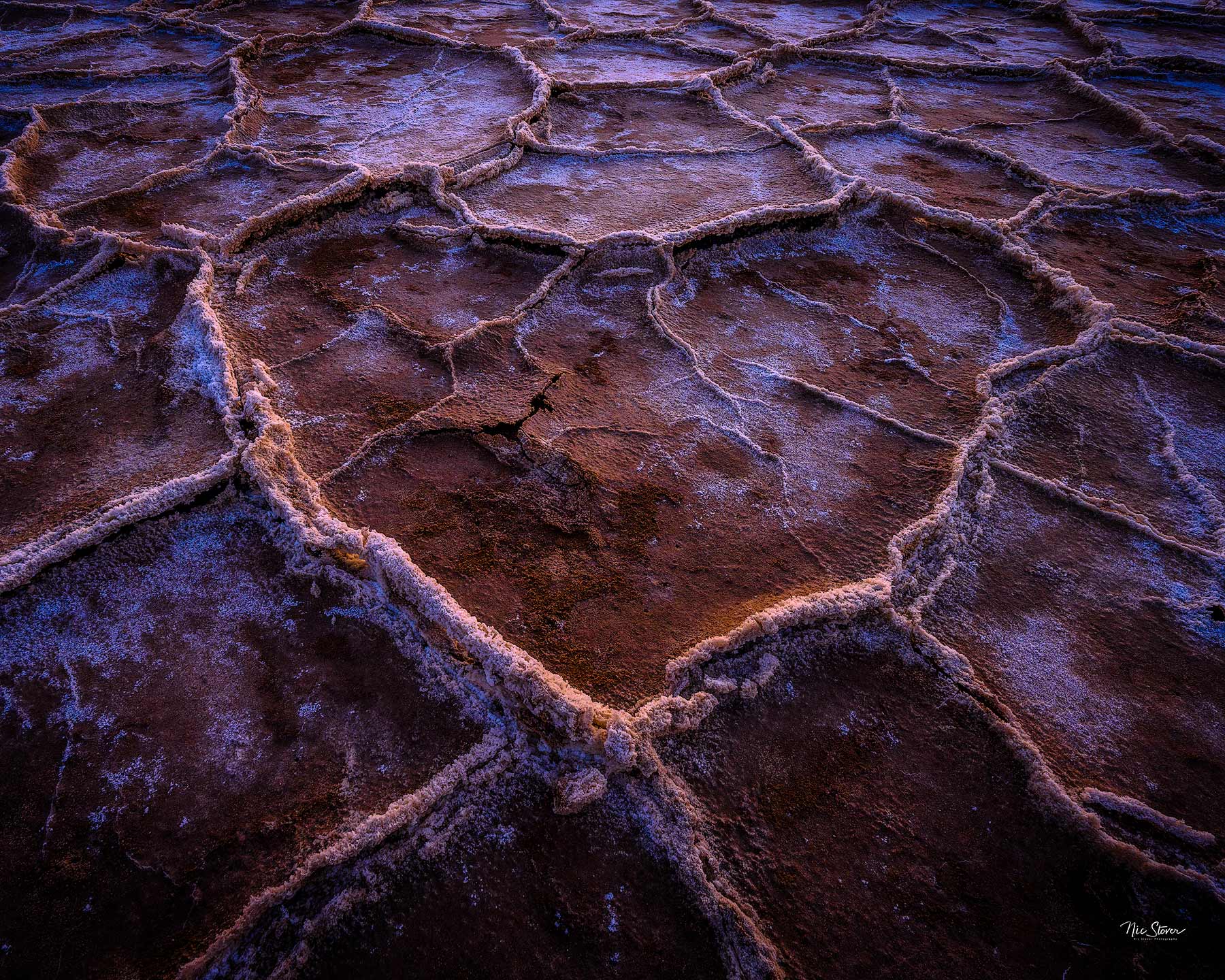
An obvious example transitioning from what I saw in the salt to the love I feel for photography and how I put my heart into my work?
Ansel Adams reflected on how this impacted his own work from a conversation with Stieglitz “I perceive the world around me as an experience of emotional and spiritual substance. I record this with my camera. I present the photography as an equivalent of my response to this world which I wish to share with the spectator.”
This was the foundation of so much of how Guy operates and how he sees the world. Over the coming days he focused on helping us to see ways to shift our image creation from informational (this is how the camera saw it) and documentary (this is what I saw) and into pictorial (I saw this --- and here is how I feel about it) and then into “I feel this – and here is a symbol for my feeling.”
Visual Inventory
As we worked to chew on the tough sinew of the bone of equivalence and what it might mean to our work, Guy threw us an easier to digest scrap. How can we think of our work in verbal and visual languages?
How can we move from the Literal (Tree, hill, cloud, etc) and into the Metaphorical (Drama, quiet, mystery, etc) The thing that stuck to me like a piece of celery between your teeth were these words from Guy
“My work is about moods, emotions, sensations, revelations, discoveries, and learning and capturing the expressive photograph of them.”
By taking a visual inventory of what we are working with, we can often times draw the correlations into what that means. Symbols, meanings, what things represent. All of these can translate into what we are feeling. 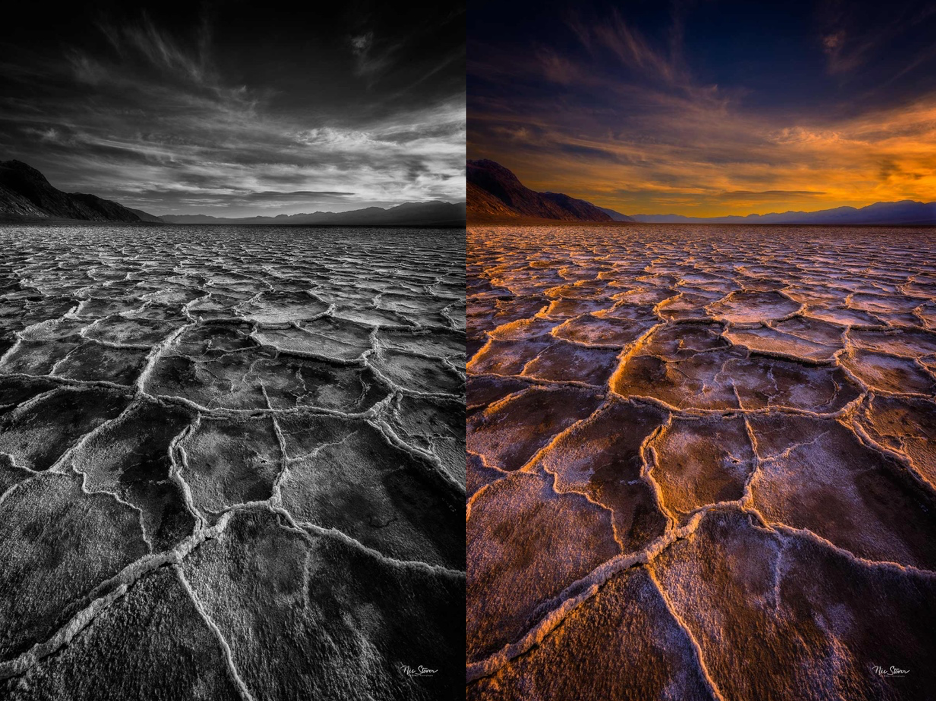
For me this becomes seeing beyond the literal of salt, sky, color and into the metaphorical of expanse, wonder, fascination. What causes the colors in the salt, how are the formed, how does it feel to be standing in such a place? How do you feel seeing this image in color vs what does it communicate in black & white?
Divergent thinking skills
Divergent thinking skills were not completely new to me as I had taught this as part of my Power to Create series when I talked about ways to measure creativity. This comes from the work from J.P. Guilford and takes into account:
- The ability to come up with a large number of solutions to a problem without advance planning.
- Coming up with novel and previously unknown solutions.
- Considering a wide range of possible solutions, rather than just those from established patterns.
- Taking a solution, once chosen from idea to practical implementation.
This was taught in the classroom with examples from both Michael and Guy and some good discussions and questions from our fellow participants. But then we got to practice this without being told we were going to be practicing it. Guy’s style was not hands on in the field, telling you where to go, what to think about, he planted these seeds. It was up to us as we scattered like cockroaches over the landscape and for us to harvest as we see fit.
Fluency
The ability to come up with a large number of solutions to a problem without advance planning.
For this we went to the Mesquite Dunes at sunrise. As the light changes we had the opportunity to come up with a wide range of possible solutions. Different focal lengths, how things separate or come together, where do lines converge or diverge. How does the scene change as we change these variables? More importantly, what do we find ourselves drawn to and why?
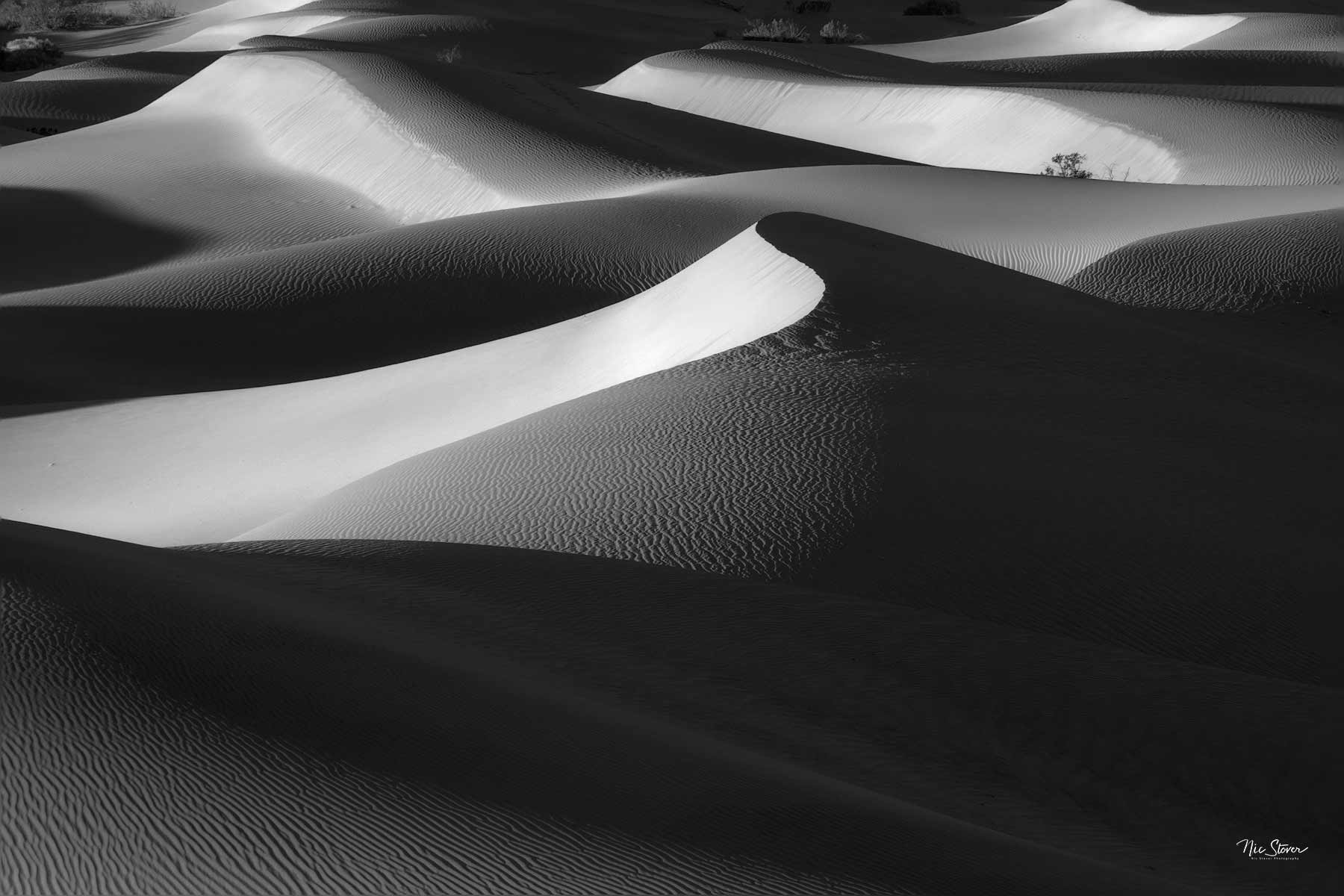
It was the really warm light on this morning accompanied with wind the day before that removed so many footprints and bought about so much flow. It is easy to forget, yet simple to remember why photographing sand dunes is a magical experience that hones your creative ways of seeing the world.
Originality
Coming up with novel and previously unknown solutions.
We found this in several places. From the craters to the high lookouts, and the canyons. There was no preset image to create, place to be at a particular time, we just wandered around like group of lost sheep grazing on the beauty that was in front of us as we took the time to slow the F down (my words, not Guy’s) 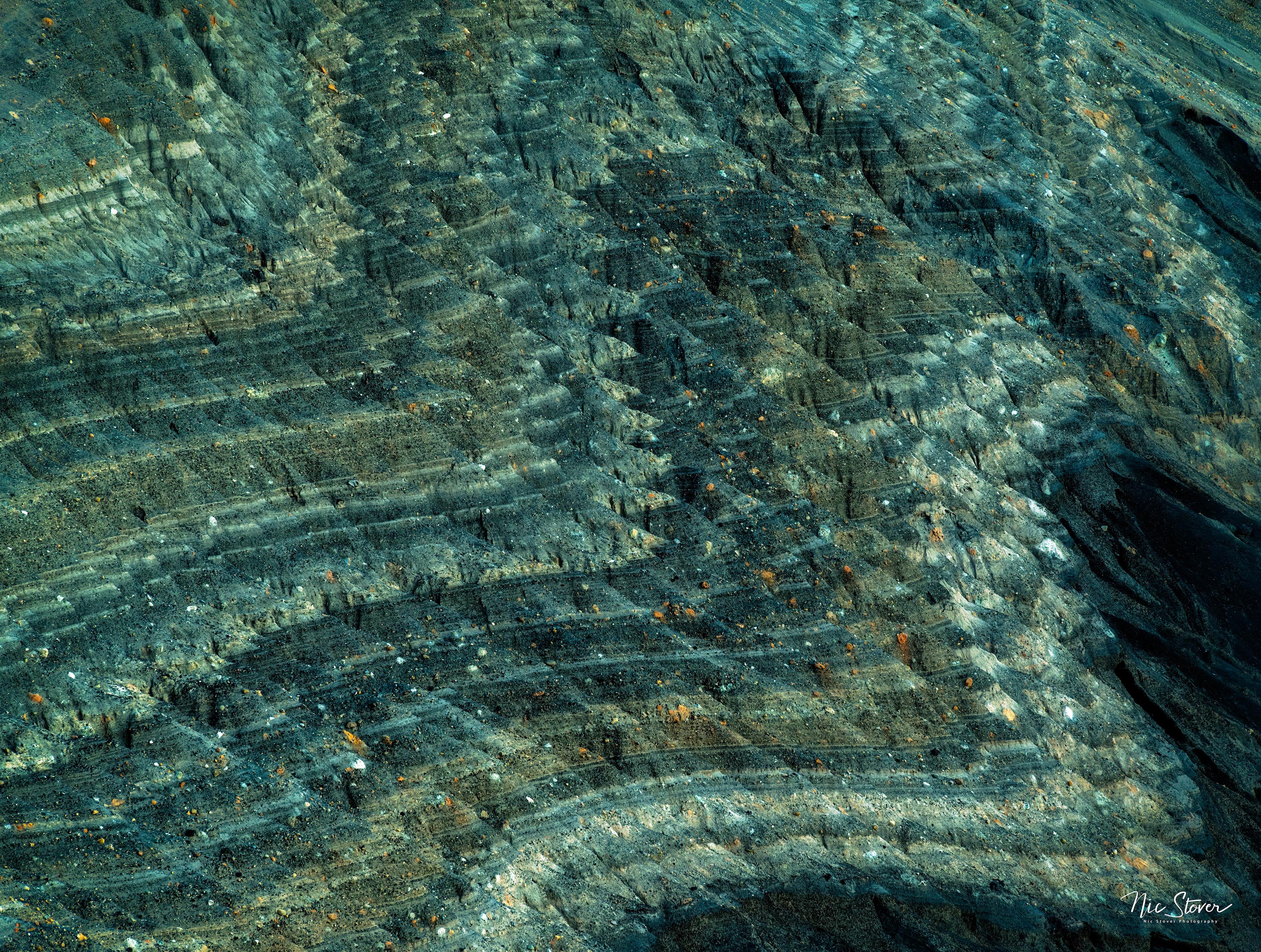
I had driven by Ubehebe Crater many times before and never given it a second thought. But as I wandered in this most literal meaning of the word “to walk or move in a leisurely, casual, or aimless way.” I was repeatedly drawn in to experience things that moments before were not visible to my eye.
Flexibility
Considering a wide range of possible solutions, rather than just those from established patterns.
There was honestly some grumbling among the natives at the choice to spend our last morning at Zabriskie point. But as the majority of people huddled towards the area of the tower or took selfies we were focused as loyal Talists (Not sure if that is a thing or not) to consider a wide range of possible solutions. Showing flexibility. 
I enjoyed Zabriskie point, not for the obvious shots on this particular morning, but to see the subtle light and to really appreciate the color variations and lighting / texture variations.
Elaboration
Taking a solution, once chosen from idea to practical implementation.
Well, this is the more personal part of our journey. Helping the ideas in your mind to manifest. Part of the challenge workshop leaders face is that is not always the right environment for you to find images you connect with in a creative way. If they do their job correctly you can take what you have learned and continue to expand on it later. Any good workshop leader will help to give you the tools that you can take with you for another time, another place, another image. 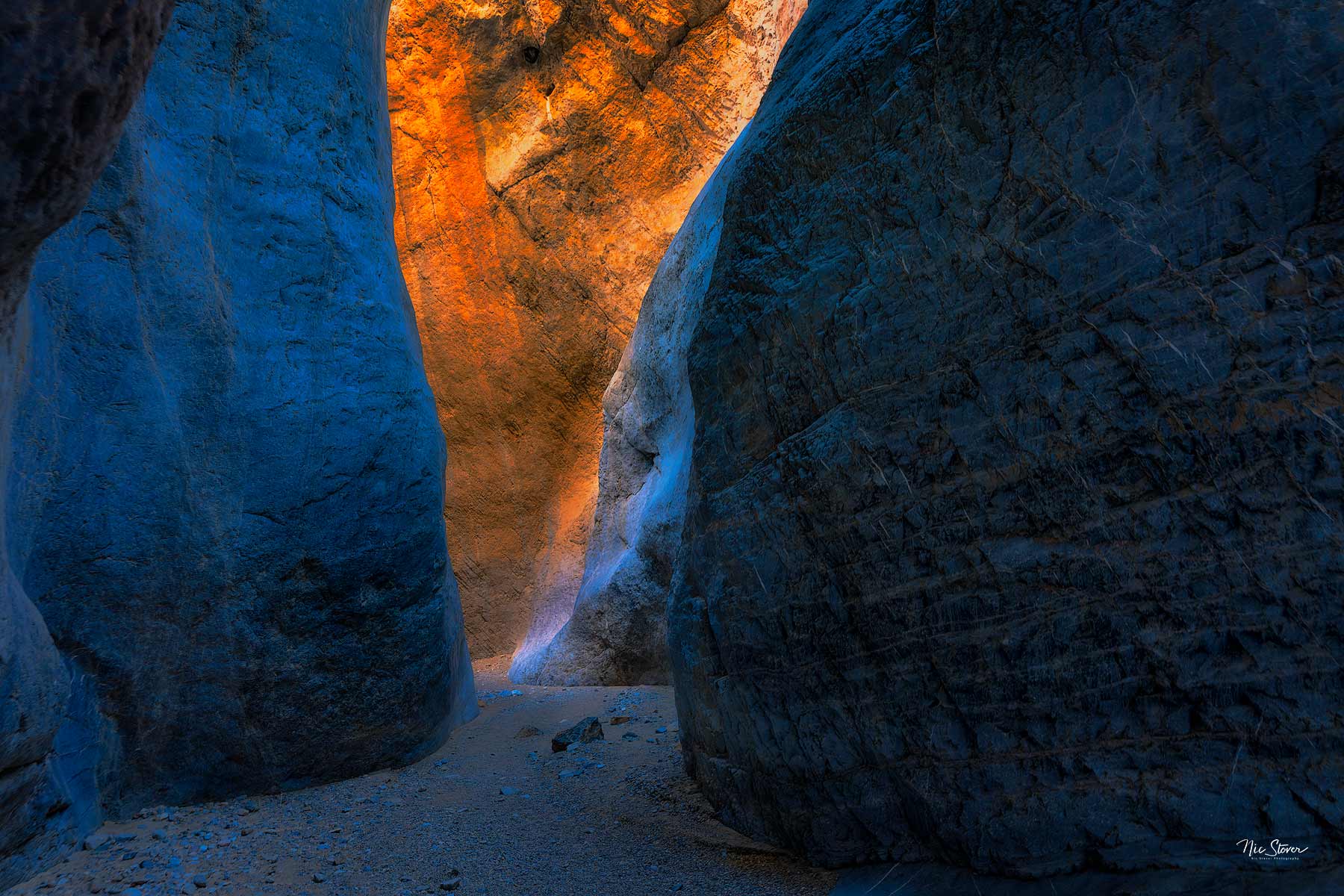
Seeing the glow, discovering an image that spoke to me. Hearing parts of Guy’s teachings in my mind about what else might this be. What else does it represent.
Some of the other things you could learn and that were discussed.
- How we can prompt creative ideas
- Historical perspective on photography and western art
- Classification of images
- Visual Weight in imagery
- Creating expressive B&W images
For me this class was not about photographing in Death Valley, collecting of images, or finding new places. While I appreciated that portion, I gained far more from talking to Guy on the side of the caldera, laughing with my fellow participants on the way to or from a shoot, and listening to how other see the landscape.
Guy and Michael spent a considerable amount of time talking about all sorts of things honed over decades of photography and for Michael spending 25% of his time a year in Death Valley and the surrounding Mojave. No one knows more about this area than Michael, no one knows more about how to think about the landscape than Guy. They make a good team.
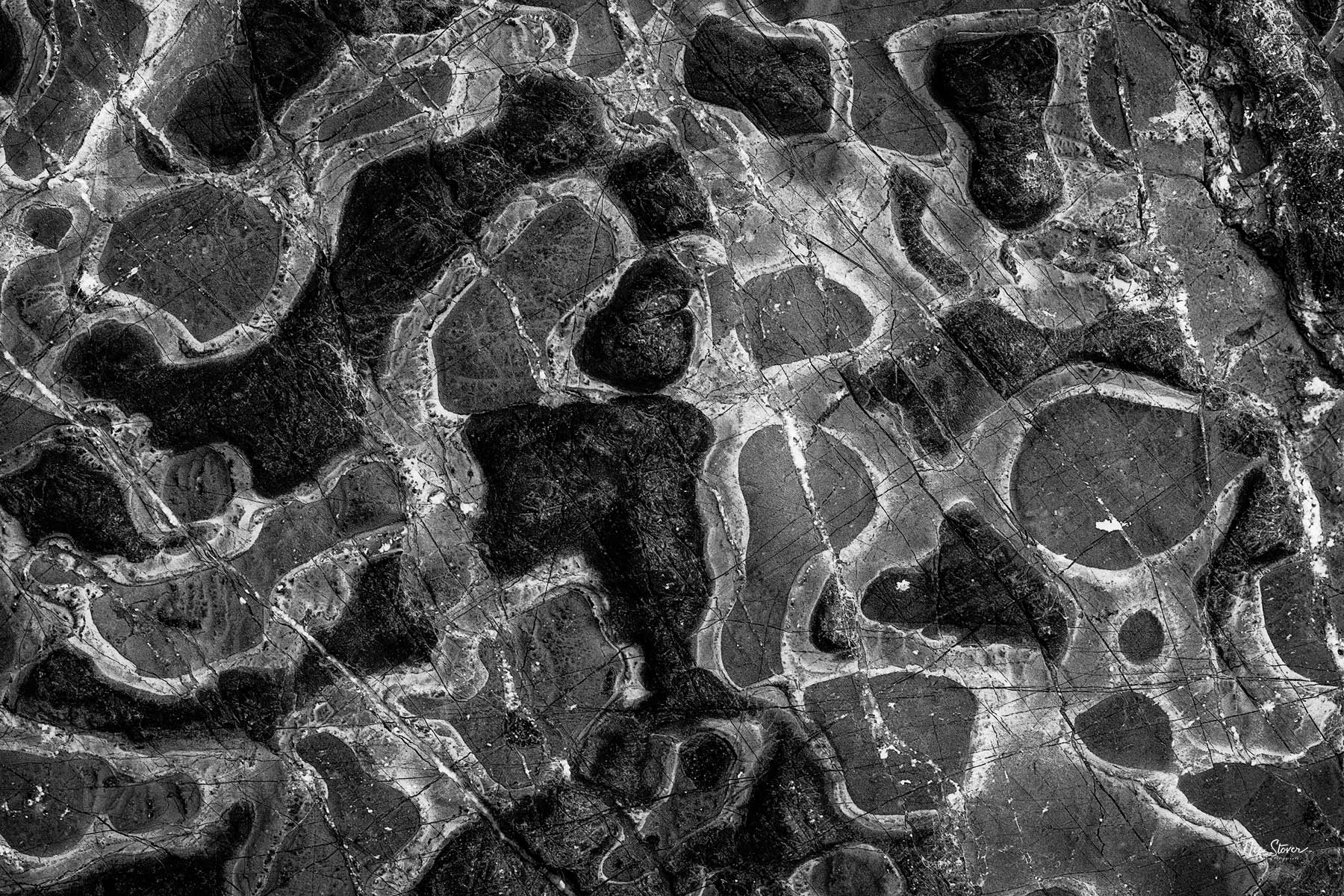
Islands of Death Valley. Moving beyond the forms and colors of the rock within the canyons of Death Valley and into how things in life are separate yet are still interlinked and how even the most stable things in life can still have cracks that exist between them that give our experiences meaning and tie us together.
One of the drivers I had to take this workshop was reading of Guy’s health issues. It would have been a shame for me to not have had the chance to look him in the eye and tell him “thank for your writing and photography and how they have moved me personally to look deeper within my own work and life.” It appeared his health scare had passed enough for him to continue with his teachings and writing and for that I am grateful.
This workshop was $1,795 and did not include lodging or meals. It was a completely different pace, instruction, and process than the one I did with Marc Adamus the month before https://www.naturephotographyclasses.com/blog/marcadamus but for the creative looking to connect deeper with their creative process it will be time well spent. You can see more at http://www.visionaryphotoworkshops.com/
Until next time
Nic
Stay Connected with News and Updates!
Join my mailing list to receive the latest news and updates from me. Choose the topic you are most interested in and I'll focus on sending you personalized content. Don't worry, your information will not be shared.
We hate SPAM. We will never sell your information, for any reason.



